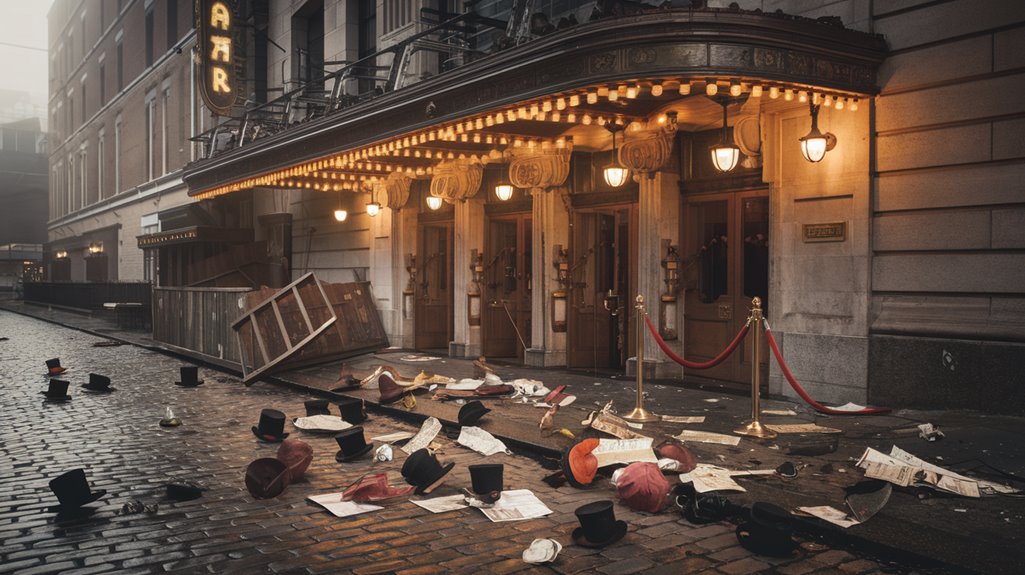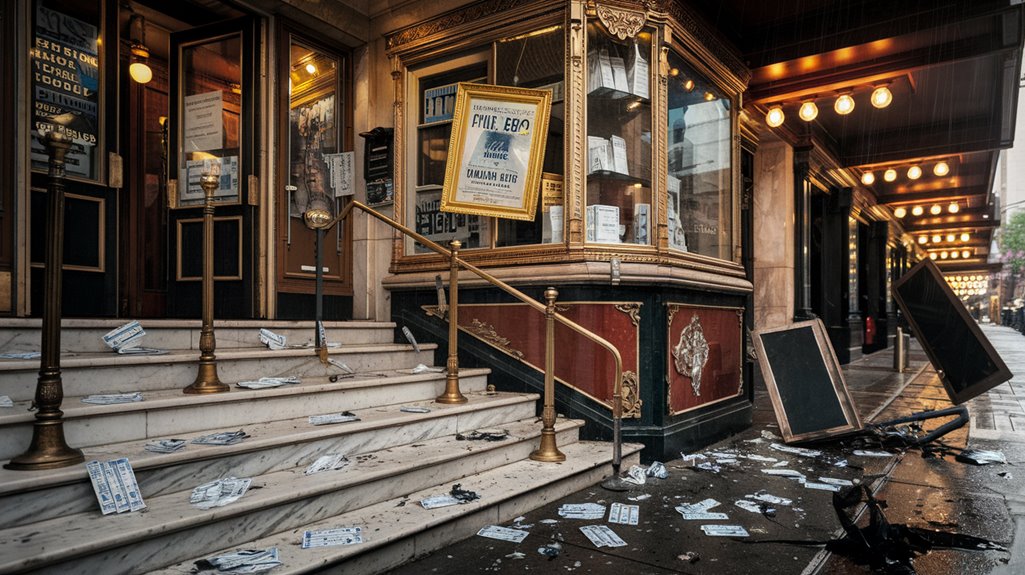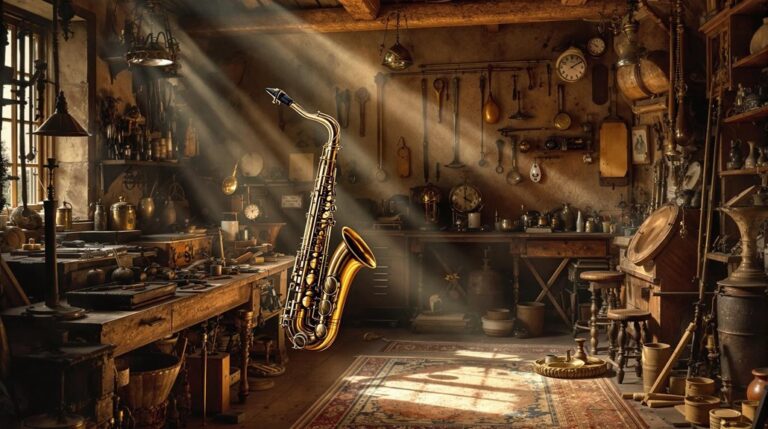Theater Ticket Riot: When Prices Sparked Chaos
You might think theater riots belong in the dramatic performances on stage, not in the streets outside them, yet history tells a different story. When ticket prices at London's Covent Garden Theater skyrocketed in 1809, you'd have witnessed more than just grumbling patrons – you'd have seen full-scale rebellion. As modern theaters face similar challenges with soaring prices and accessibility concerns, these historical protests offer surprising insights into today's cultural battles over who gets to experience the arts.
The Breaking Point: How Theater Prices Led to Public Outrage
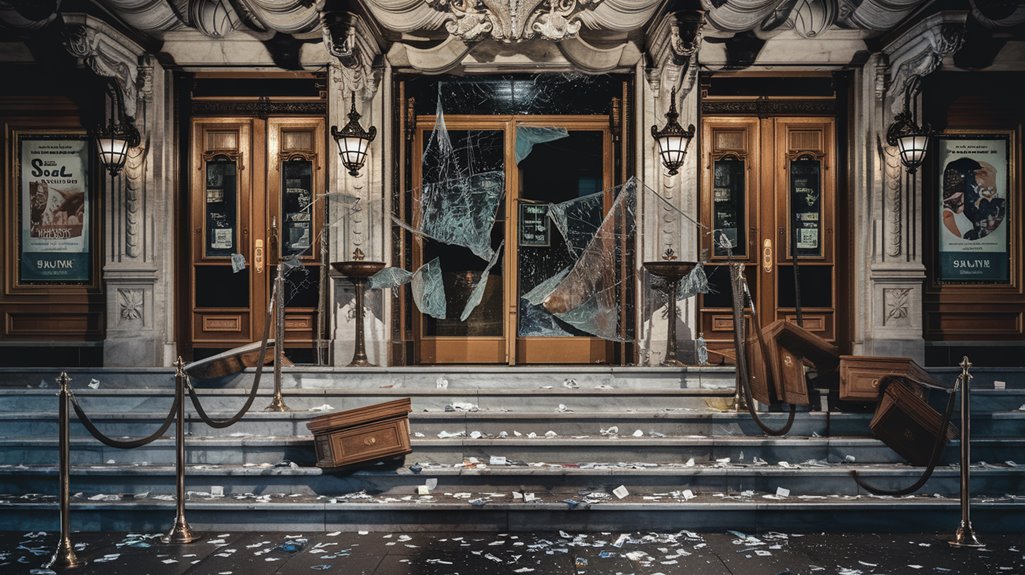
While theater prices haven't risen as quickly as inflation, the steady increase in both bottom and top ticket prices has pushed many patrons to their breaking point.
You'll find that bottom prices have jumped from $31.72 to $34.75, while top prices have climbed from $53.12 to $59.33 over just four years. This surge, combined with stagnant wages and rising living costs, has sparked intense public sentiment against the industry's pricing practices. The industry's adoption of airline pricing models reflects a shift toward demand-based costs rather than fixed rates.
What you're witnessing is a classic price elasticity problem: theaters need higher revenue to cover increased operational costs, but their attempts to raise prices are meeting fierce resistance. Theatres are particularly challenged by donor fatigue as private philanthropy continues to decline.
With 74% of venues reporting significant attendance drops and limited affordable options becoming scarcer, you're seeing the perfect storm for public outrage against the industry's perceived elitism.
Historical Parallels in Theater Price Protests
Although today's theater price protests may seem unprecedented, they echo a remarkable historical event known as the 1809 Covent Garden Theater Riots.
You'll find striking parallels between modern protests and this historic uprising, where class consciousness played a pivotal role in shaping public reaction to increased ticket prices.
Like contemporary movements against cultural elitism, the OP riots weren't simply about money – they represented a broader struggle for social equality and access to the arts. The removal of the one shilling gallery sparked particular outrage among working-class theatergoers. The protesters used drums and whistles to disrupt performances and make their voices heard.
You can trace the same themes of resistance against privileged access and demands for cultural inclusivity through both eras.
Just as the OPs succeeded in forcing management to restore affordable pricing through sustained protest, today's activists continue to challenge barriers that restrict theater access to elite social circles.
Behind the Numbers: The Economics of Theater Pricing
Since theaters face mounting pressure to stay financially viable, the complex economics behind ticket pricing reveals a delicate balancing act.
You'll find theaters grappling with a stark reality: 37.4% of seats remain empty while ticket prices have surged 29%. The pricing psychology behind dynamic pricing and ticket resale has transformed how venues monetize their shows, but at what cost?
Consider this: Broadway audiences now boast an average income of $261,000, highlighting the growing divide between theaters and everyday patrons. Many venues now implement early bird discounts to secure advance sales and improve cash flow. Operating expenses can reach half a million dollars weekly for shows, driving the push for higher ticket prices.
To combat this, venues experiment with tiered pricing, pay-what-you-want options, and group discounts. Yet even these solutions struggle against rising production costs and the industry's inherent lack of scalability.
When premium seats command $1,000+, it's clear that balancing profitability with accessibility remains theater's greatest challenge.
Social Impact: When Theater Becomes Inaccessible
The rising theater ticket prices create more than just financial strain – they're fundamentally reshaping who can access live performances.
As prices soar, you'll notice a growing cultural elitism that's transforming theaters from community hubs into exclusive venues.
This shift creates community isolation, particularly affecting low-income families who now face significant barriers to cultural experiences.
The new system of tiered seat pricing further widens the economic divide among moviegoers.
You're witnessing a dramatic change in how theaters serve their communities, with four key consequences:
- Local businesses suffer as fewer people visit nearby shops and restaurants.
- Older audiences experience increased social isolation without regular theater events.
- Communities lose valuable cultural enrichment opportunities.
- Alternative entertainment options, like streaming services, replace traditional theater experiences.
With prices jumping from 12,000 to 15,000 won, many former regular moviegoers are forced to become more selective about which films they watch.
This accessibility crisis isn't just about entertainment – it's about preserving the social fabric that theaters have historically helped weave.
The Future of Theater Accessibility and Affordability
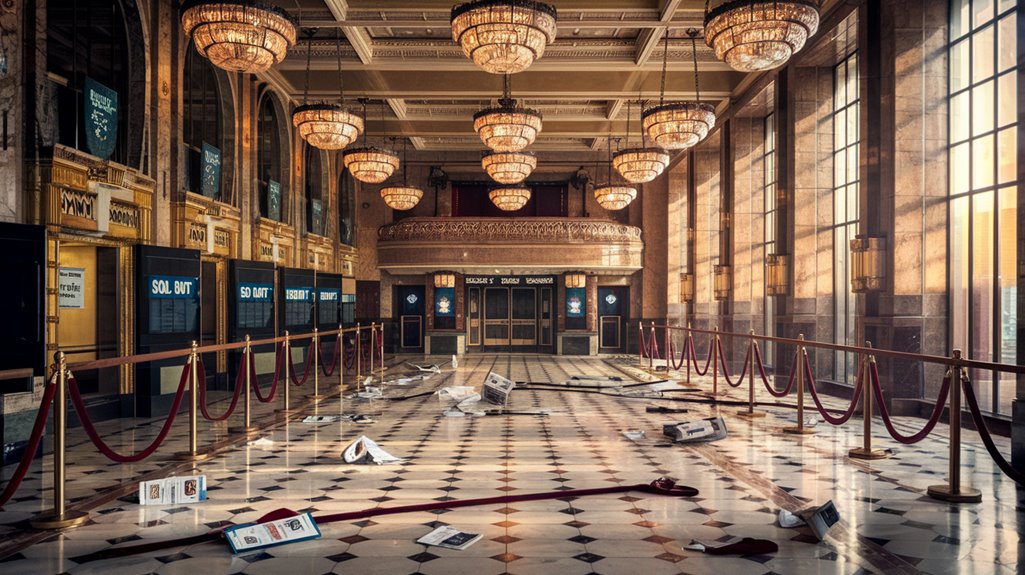
Looking ahead to theater's future, you'll find innovative solutions emerging to tackle the growing accessibility crisis. From equitable pricing models like "pay what you can" to strategic placement of venues in underserved neighborhoods, theaters are reimagining how to connect with diverse audiences.
Theaters are discovering that providing low price tickets can consistently fill seats, as proven by Crossroads Theatre Company's successful initiatives.
Recent data shows that the average ticket cost of $10.78 represents a continuing upward trend in theater pricing.
You'll see more theaters incorporating accessibility features from the ground up, rather than treating them as optional add-ons.
Community engagement has become central to survival, with small regional theaters leading the charge in fostering new work and experimental approaches.
While traditional subscription models fade, you'll notice theaters adapting with flexible pricing strategies like "Ten Dollar Tuesdays" and targeted fundraising efforts.
The path forward isn't one-size-fits-all – it's about creating intentionally inclusive spaces that serve everyone, regardless of economic status or physical ability.

